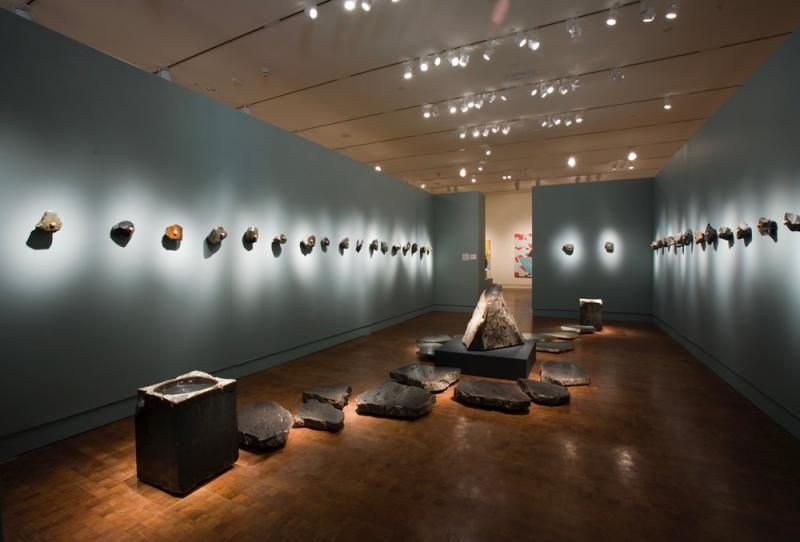Digital Collections
Celebrating the breadth and depth of Hawaiian knowledge. Amplifying Pacific voices of resiliency and hope. Recording the wisdom of past and present to help shape our future.
Kīhei de Silva
For me, it is a decidedly Hawaiian space. A universe, maybe. Or a sacred inner landscape, or a womb, or a mele ‘ai pōhaku.
I have been here many times before. It is as familiar as my mother’s voice telling me the story of Pōhaku Nānā Lā—a stone that, like Kaʻili’s, anchors the mat corners and net fringes of our identity.
It occupies the same space as the stone path across Ulupō heiau in Ko‘olaupoko, the same rock-by-rock grid that, on Kaua‘i, leads from Kē‘ē to the piko stone of Kilioe.
It is the salt pan at Kahapa‘akai, Hōnaunau, and it is the cistern at Aunty Mary’s house just outside the pu‘uhonua wall.
It is the hului of Makali‘i hung from the walls with pegs of hope and despair. It is the diagonal slice of the mea kaha ki‘i. It is the bed not lined up with the doorway.
I last visited the Academy’s Luce Pavilion a month ago for "Life in the Pacific of the 1700s." I left in mute dejection, robbed of tongue and shorn of manhood. I had failed to approach properly a family god, failed to wail properly over the lost work of my family’s hands, failed to defy, rescue, and return.
This exhibit, Kaʻili Chun’s "Nāu Ka Wae," gives back my words, hope, and hands. Kaʻili has made, in the old way, sacredness out of the ordinary. Sacredness out of rock, wood, water, salt. "Life," on the other hand, began with sacredness—with a feathered Kū, for god’s sake—and made of it a Wal-Mart: fishhooks in aisle four, bark cloth in aisle two, Kū on a Space Odyssey obelisk.
It’s all in the placement. It’s all in the hands and soul of the one who does the placing. The hands of a curator vs. the hands of a kuhikuhipuʻuone.
What makes Kaʻili’s space so Hawaiian? The air changes. The kaona tickles and bites. The rock mouths speak; they forgive my failure and allow me to choose again.
What makes it so Hawaiian? When the opening day crowd of five-hundred gathers, gawks, gabs, and pokes, it shifts, it withdraws, it clams up. He keu kēia a ka i‘a hāmau leo. As Kepelino said long ago, "When the foreigners ask and ask, they get only a heap of foolishness."
"Nāu ka Wae," in the blink of an eye, can become an inscrutable heap; a pile of nonsense.
If I were to explain to the sincere outsider, what would I say? I might say, "Re-read Eliot’s ʻFour Quartets’ (and think of stillpoint). I might say, "Look over Renee Magritte’s ‘The Wonder of Nature’ (and think of displacement)." I’d probably say, "Think of the little Dutch boy with his finger in the dike, choose just one of Kaʻili’s plugs, and pull."
Don’t go when it’s crowded. Take a penlight.

photo courtesy of: Kaʻili Chun